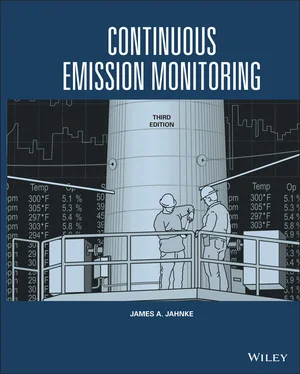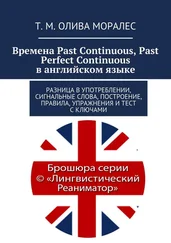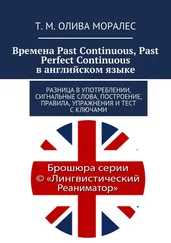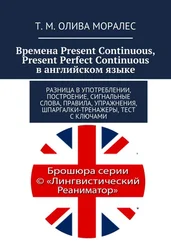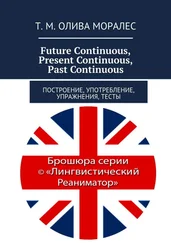James A. Jahnke - Continuous Emission Monitoring
Здесь есть возможность читать онлайн «James A. Jahnke - Continuous Emission Monitoring» — ознакомительный отрывок электронной книги совершенно бесплатно, а после прочтения отрывка купить полную версию. В некоторых случаях можно слушать аудио, скачать через торрент в формате fb2 и присутствует краткое содержание. Жанр: unrecognised, на английском языке. Описание произведения, (предисловие) а так же отзывы посетителей доступны на портале библиотеки ЛибКат.
- Название:Continuous Emission Monitoring
- Автор:
- Жанр:
- Год:неизвестен
- ISBN:нет данных
- Рейтинг книги:4 / 5. Голосов: 1
-
Избранное:Добавить в избранное
- Отзывы:
-
Ваша оценка:
- 80
- 1
- 2
- 3
- 4
- 5
Continuous Emission Monitoring: краткое содержание, описание и аннотация
Предлагаем к чтению аннотацию, описание, краткое содержание или предисловие (зависит от того, что написал сам автор книги «Continuous Emission Monitoring»). Если вы не нашли необходимую информацию о книге — напишите в комментариях, мы постараемся отыскать её.
The new edition of the only single-volume reference on both the regulatory and technical aspects of U.S. and international continuous emission monitoring (CEM) systems Continuous Emission Monitoring
Continuous Emission Monitoring:
Continuous Emission Monitoring, Third Edition
Continuous Emission Monitoring — читать онлайн ознакомительный отрывок
Ниже представлен текст книги, разбитый по страницам. Система сохранения места последней прочитанной страницы, позволяет с удобством читать онлайн бесплатно книгу «Continuous Emission Monitoring», без необходимости каждый раз заново искать на чём Вы остановились. Поставьте закладку, и сможете в любой момент перейти на страницу, на которой закончили чтение.
Интервал:
Закладка:
Limit of Liability/Disclaimer of Warranty In view of ongoing research, equipment modifications, changes in governmental regulations, and the constant flow of information relating to the use of experimental reagents, equipment, and devices, the reader is urged to review and evaluate the information provided in the package insert or instructions for each chemical, piece of equipment, reagent, or device for, among other things, any changes in the instructions or indication of usage and for added warnings and precautions. While the publisher and authors have used their best efforts in preparing this work, they make no representations or warranties with respect to the accuracy or completeness of the contents of this work and specifically disclaim all warranties, including without limitation any implied warranties of merchantability or fitness for a particular purpose. No warranty may be created or extended by sales representatives, written sales materials or promotional statements for this work. The fact that an organization, website, or product is referred to in this work as a citation and/or potential source of further information does not mean that the publisher and authors endorse the information or services the organization, website, or product may provide or recommendations it may make. This work is sold with the understanding that the publisher is not engaged in rendering professional services. The advice and strategies contained herein may not be suitable for your situation. You should consult with a specialist where appropriate. Further, readers should be aware that websites listed in this work may have changed or disappeared between when this work was written and when it is read. Neither the publisher nor authors shall be liable for any loss of profit or any other commercial damages, including but not limited to special, incidental, consequential, or other damages.
Library of Congress Cataloging‐in‐Publication Data
Names: Jahnke, J. A. (James A.), author.
Title: Continuous emission monitoring / James A. Jahnke.
Description: Third edition. | Hoboken, NJ : Wiley, 2022. | Includes bibliographical references and index.
Identifiers: LCCN 2021050361 (print) | LCCN 2021050362 (ebook) | ISBN 9781119433989 (cloth) | ISBN 9781119433996 (adobe pdf) | ISBN 9781119434023 (epub)
Subjects: LCSH: Continuous emission monitoring.
Classification: LCC TD890 .J34 2022 (print) | LCC TD890 (ebook) | DDC 628.5/30287–dc23/eng/20211115
LC record available at https://lccn.loc.gov/2021050361LC ebook record available at https://lccn.loc.gov/2021050362
Cover Design: Wiley
Cover Image: © Cover illustration art by John M. Havel
To Gloria
PREFACE
This third edition to Continuous Emission Monitoring comes 20 years after the second edition was published. Over that period, more sources in more industries have been required to monitor a wider range of pollutants at ever‐decreasing emission levels. To meet the challenges of more stringent regulatory programs, both monitoring technology and the management systems necessary to maintain them have developed to the point where accurate and precise emissions data can be obtained at the lowest ranges specified by regulatory agencies. The evolution of monitoring regulation and the technology necessary to support it are based on programs initiated in the 1970s and 1980s. These programs were described in the first and second editions of Continuous Emission Monitoring , which have provided a foundation for those newly entering or those needing to gain perspective of the field. This third edition extends that foundation to later programs implemented in the 1990s and 2000s. In the 1990s, continuous emission monitoring (CEM) systems were applied to support the determination of emission “allowances,” in the U.S. acid rain cap and trade program. Later, in the 2000s, regulatory programs for NO xemissions, mercury, volatile and “air toxics,” semi‐volatile organic and inorganic compounds were instituted, leading to significant challenges for the monitoring community. This book focuses on continuous emission monitoring requirements promulgated in the United States, although monitoring rules developed in Canada and the European Union are addressed where appropriate.
Continuous emission monitoring involves the sum of activities associated with determining and reporting pollutant emissions from stationary sources. Coal‐ and oil‐fired power plants, municipal and hazardous waste incinerators, petroleum refineries, cement plants, Kraft pulp mills, and, now, many chemical process industries are required to monitor emissions on a continuous basis. The emissions data obtained provide a continuous record that can be used by environmental control agencies to support a variety of regulatory programs. First used to monitor the operation of air pollution control equipment, regulatory applications have extended in the United States to use CEM systems for determining the compliance of stationary sources with their emission limitations. For CEM data to be credible, one cannot rely only on instrumentation. The implementation of a plant‐level quality assurance program, based on routine quality control procedures, has been found essential for data credibility. As a result, CEM quality assurance and quality control have become integral to CEM regulation.
One of the purposes of this book is to provide an understanding of both the regulatory and technical issues that must be considered when making decisions about CEM systems. As regulatory applications are extended, CEM system data are being used increasingly for process control and optimization. Although the use of CEM systems for determining compliance with pollutant emission limits has been the driving force for their installation, the benefits of knowing what and how much of something is being emitted are becoming more widely recognized. Here, the adage that “if you can measure it, you can control it” has led to the acceptance of CEM systems by managers who understand that CEM systems can be used for more than just meeting environmental regulations – that a knowledge of emission rates can also be used to optimize plant operations.
The earlier editions of this book have continued to serve as a resource for training programs, the development of quality assurance plans, and the drafting of technical specifications for monitoring system purchases. It is a characteristic of U.S. environmental programs, that once written, regulations do not go away. In some cases they may be revised, but in others, they remain static. Continuous emission monitoring requirements have accordingly remained relatively unchanged over the past four decades. U.S. CEM requirements have remained basically the same since their inception in the 1970s, seeing only their greatest alteration with the allowance trading programs implemented in the 1990s. In terms of technology, extractive sampling methods, in situ monitoring, the principles of light absorption and light scattering, and other analytical methods applied in the monitoring instrumentation are fundamental; providing the basis for understanding the operation of instruments that typically remain installed from 15 to 30 years. However, much has been learned over the past 20 years and an update of the second edition is needed to provide a current perspective of the field. In particular, the U.S. Environmental Protection Agency institutes new rules and requirements as required by the periodic amendment of the Clean Air Act. These new rules are added to extend control over a wider range of industries for a wider range of pollutants. This edition of Continuous Emission Monitoring addresses these rules and the technology applied to meet them.
This book examines the interplay of technology and regulation as it affects the design, application, and certification of CEM systems. It describes new techniques employed in emissions monitoring, adds new knowledge gained on existing methods, but excludes instrumentation that is no longer available commercially. Chapters on the measurement of air toxics, mercury, and greenhouse gases have been added. The chapter on air toxics discusses monitoring instrumentation and methods used to measure hazardous air pollutants regulated under 40 CFR 63, the so‐called MACT (Maximum Achievable Control Technology) program. Monitoring for mercury is also required under this rule; however, due to the complexity of both the monitoring technology, calibration methods, and certification requirements, a separate chapter is devoted to this topic. A chapter on greenhouse gas monitoring has also been added. Monitoring greenhouse gases is relatively straightforward; however, data quality is paramount in this area of measurement. The role of CEM systems in greenhouse gas reporting is discussed in relation to the use of mass balance, emission factors, and other estimates to provide perspectives in reporting and certifying greenhouse gas information.
Читать дальшеИнтервал:
Закладка:
Похожие книги на «Continuous Emission Monitoring»
Представляем Вашему вниманию похожие книги на «Continuous Emission Monitoring» списком для выбора. Мы отобрали схожую по названию и смыслу литературу в надежде предоставить читателям больше вариантов отыскать новые, интересные, ещё непрочитанные произведения.
Обсуждение, отзывы о книге «Continuous Emission Monitoring» и просто собственные мнения читателей. Оставьте ваши комментарии, напишите, что Вы думаете о произведении, его смысле или главных героях. Укажите что конкретно понравилось, а что нет, и почему Вы так считаете.
